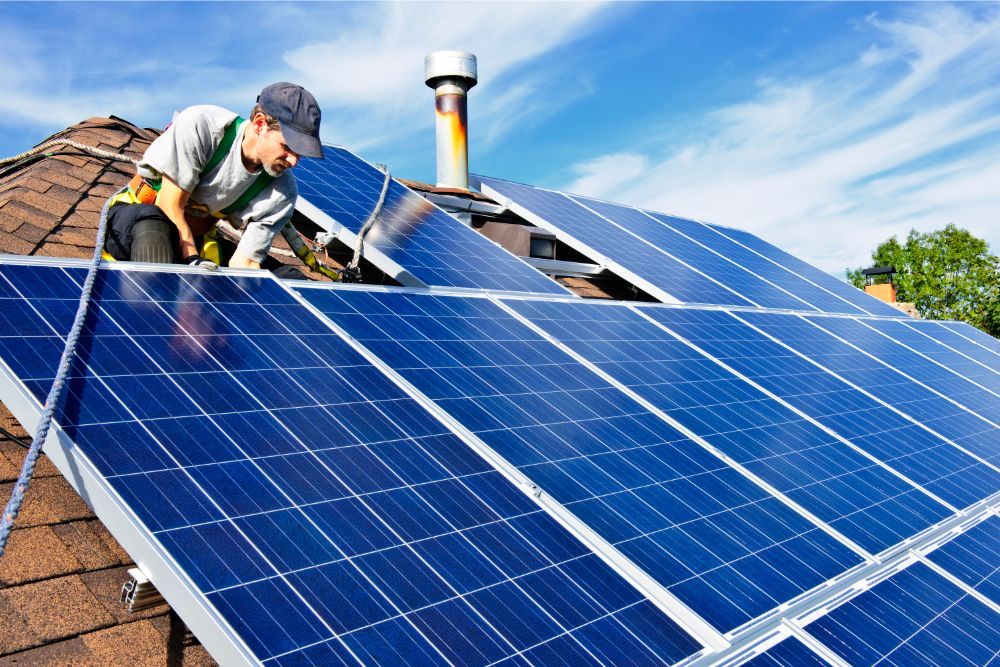Is going solar something you’ve always dreamed of, but perhaps felt daunted by the apparently complex process? Or perhaps you are eco-conscious and are looking for ways to decrease your carbon footprint? Today, you’re in the right place to find the answers to your burning questions. This comprehensive guide to solar panel installation is prepared specifically for beginners walking the sunlit path towards sustainable energy living. Whether you’re a homeowner pondering on the possibility of going solar, a DIY enthusiast, or a newcomer in the solar installation business, this article offers knowledge that we hope will help light your journey.
The concept of harnessing the power of the sun to fulfil our electrical needs is fascinating, righteous, and extremely relevant in today’s world. Despite this, solar panel installation can often feel overwhelming due to endless arrays of brands, confusing tech jargon, and the nitty-gritty of electrical systems. Indeed, where should you even start? This guide aims to cover important aspects around this process and provide valuable insights for a well-informed decision on whether solar energy is your best fit.
Our comprehensive guide covers the why, what, and how of solar panel installation, including the pros and cons, the costs involved, the different types of panels, installation and maintenance, key terms you need to know, and more. So, if you are all set to bathe in the enlightening world of solar energy, let’s dive right in.
The Sustainability and Savings: Why Go Solar?
Adopting solar energy is not purely an environmental decision. Harnessing the sun’s power translates into significant savings on your energy bill. In some regions, depending on the efficiency of your solar panels and the intensity of the sunlight, it’s possible to offset your power bill entirely.
Moreover, solar power is more than just cost savings. With global climate change being an imminent concern, shifting towards renewable energy sources is a progressive step in reducing our carbon footprints. By allowing you to generate your own clean energy, solar panels can make a substantial contribution to sustainability.
Finally, from a long-term perspective, they increase property value. A sustainable home is a selling point with increasing awareness about renewable energy benefits. Settling the debate on why go solar, let’s tip-toe into understanding what we are dealing with.
A Dip Into Tech: What are Solar Panels?
Solar panels, also known as photovoltaic cells, convert sunlight into electricity, which can be used to power homes and businesses. Made up of silicon semiconductor materials, they absorb sunlight that interacts with the silicon to produce an electric current.
The science behind these hot pieces of technology is fascinating. The way they transform sunlight into usable electric energy to power your home appliances is awe-inspiring. Their growing affordability, efficiency, and improvements in technology make them an attractive option.
However, not all solar panels are created equal. They can differ significantly in terms of material, efficiency, price, and warranty, which leads us to the next section where we discuss the types of solar panels.
Making the Right Choice: Types of Solar Panels and Their Efficiency
When going solar, you’re essentially investing in a technology that should serve you for decades. To make an informed choice, it’s imperative to know the different types of solar panels and their efficiency.
In this guide, we will cover the three major types of solar panels: monocrystalline, polycrystalline, and thin-film. Each type comes with its own levels of efficiency, cost, aesthetics, and application suitability.
The Cost Factor: Are Solar Panels Worth the Investment?
A key consideration for going solar is undoubtedly the cost. While the initial investment might seem steep, the long-term savings gained from energy costs can offset the initial expenditure, making it a significant contender in your home-improvement plans. It’s essential to understand the various costs involved, from panel costs, installation charges, and maintenance offerings to potential savings, tax credits, and potential energy bill reductions.
DIY vs. Professional Installation: Weighing the Pros and Cons
Like any home-improvement project, solar panel installation comes with the choice of whether to undertake a DIY project or hire a professional installer. Here, we break down the pros and cons of each option to help you evaluate what works best for your needs, skill set, budget, and timeline.
Living in the Future: Post-Installation and Maintenance
Once the installation is completed, it’s essential to know how to maintain them to maximise their efficiency and lifespan. Here, we discuss the intricacies of cleaner, economical and sustainable living post the installation.
Conclusion: Solar Power – A Bright Future
Solar panel installation might seem like a herculean task initially, but with the right knowledge and choices, it serves as a step towards a healthier planet and savings in our pockets. While the initial investment is notable, the direct benefits could impact our monthly bills for many years, and indirect benefits serve Mother Earth.
The installation process can be complex but manageable. It’s pivotal to choose the right type of panel, understand the costs, contemplate on whether DIY or a professional route is better for you, and delve into the world of maintenance post-installation. By evaluating these points, you take charge of your solar power journey, one panel at a time.
Indeed, as we step into the future, we see it illuminated by the power of the sun. An understanding of solar panel installation just brings us one step closer to a cleaner, sustainable, and power-efficient future. So be brave, take that step, and harness the bright sun to power your world. After all, the future is indeed bright for those who embrace it.

